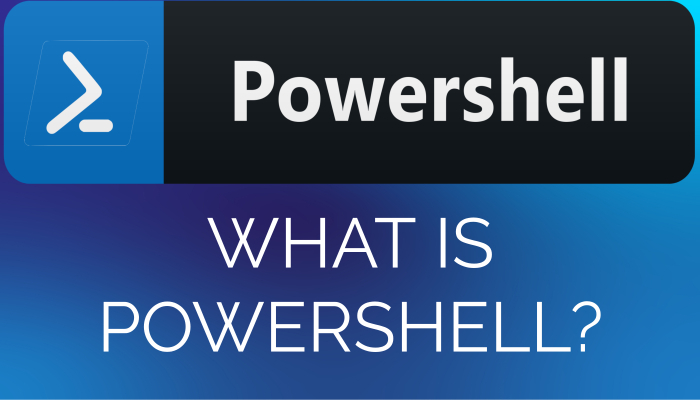
PowerShell is a task automation and configuration management framework developed by Microsoft. It consists of a command-line shell and an associated scripting language built on the .NET framework. PowerShell is particularly powerful for system administrators and IT professionals, allowing them to automate complex tasks, manage systems, and configure environments efficiently across both local and remote Windows, Linux, and macOS systems.
Key Components of PowerShell
Command-Line Shell
PowerShell provides a command-line interface (CLI) where users can execute commands, known as cmdlets (pronounced “command-lets”). These cmdlets perform various functions, such as managing files, services, processes, and system configurations.
Scripting Language
PowerShell includes a powerful scripting language that allows users to write scripts (.ps1 files) to automate tasks. These scripts can include variables, loops, conditionals, and functions, making it a versatile tool for automation.
Cmdlets
Cmdlets are built-in commands in PowerShell that perform specific functions. They follow a consistent “Verb-Noun” naming pattern, like Get-Process (to retrieve running processes) or Set-ExecutionPolicy (to set the script execution policy). There are thousands of cmdlets available for different tasks.
Pipelines
One of PowerShell’s most powerful features is its ability to pass output from one cmdlet directly into another using a pipeline (|). This allows users to chain commands together to perform complex operations efficiently.
Objects
Unlike traditional command-line interfaces that return plain text, PowerShell cmdlets return objects. This object-oriented approach allows users to interact with data more flexibly, such as filtering, sorting, and selecting properties.
Modules
PowerShell can be extended through modules, which are packages that contain cmdlets, providers, functions, and workflows. Many vendors provide PowerShell modules for managing their software, allowing for easier automation of complex tasks.
Remote Management
PowerShell supports remote management, allowing administrators to run commands on remote systems. This is particularly useful in enterprise environments where multiple systems need to be managed simultaneously.
Cross-Platform
While originally developed for Windows, PowerShell Core (now simply known as PowerShell) is cross-platform and can run on Linux and macOS. This version is open-source and built on .NET Core, making it a versatile tool for managing diverse environments.
Common Uses of PowerShell
- Automating repetitive tasks (e.g., user account creation, software installation).
- Managing Windows servers and desktops.
- Configuring system settings and network configurations.
- Monitoring system performance and health.
- Managing cloud environments (e.g., Microsoft Azure).
- Handling bulk data operations, such as exporting and importing
Some PowerShell Command Examples
Stop Spooler service
Stop-Service -Name "Spooler"Get a list of files in a directory
Get-ChildItem -Path C:\ExampleDirectoryConclusion
PowerShell is an essential tool for system administrators, IT professionals, and power users, offering extensive capabilities for managing systems, automating tasks, and configuring environments. Its combination of a command-line interface, scripting language, and object-oriented approach makes it a powerful tool for a wide range of tasks across multiple platforms.
Did you find this post useful? Follow me on LinkedIn, Twitter and subscribe to my YouTube channel to be notified when I publish something new! Also, if you have any feedback or questions, please let me know in the comments below. Thank you for reading.